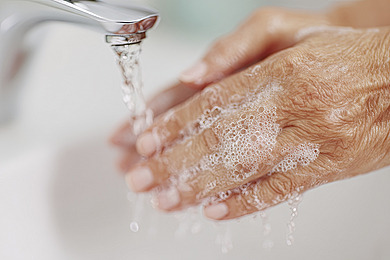
As this year comes to a close, I want to reflect on my (almost) first year serving as Chief of the UNMC Infectious Diseases Division. 2025 started with unexpected changes – Dr. Debra Romberger stepping down from her role as Chair of Internal Medicine and Dr. Mark Rupp taking on the role as Interim Chair. I got to know Dr. Romberger during the interview process for the Division Chief position and in seeking her advice and counsel during my first few months at UNMC. In the all too brief time that I knew Dr. Romberger, I grew to understand how much of a strong, caring and dedicated leader she was. She will be missed. I want to recognize and thank Dr. Rupp for his leadership as Interim Chair of Internal Medicine. He agreed to take over the Department in a difficult time and has been a strong advocate and leader. His dedication to both the ID Division and the Department of Internal Medicine has benefited all of us and advanced the mission of UNMC.
Besides myself, we welcomed Dr. Mohanad Al-Obaidi to the division as a new faculty member. We also welcomed 7 new staff members: Ja’Sia Ward, Caitlin Harrison, Katherine Kough, Toukatha Marupov, Daneja Menyweather, Lily Nyenga, and Caroline Song.
This year brought many great accomplishments and achievements for the ID Division. There are so many that I cannot do them all justice, but I wanted to call out a few: Dr. Nico Cortes-Penfield was promoted to Associate Professor and assumed the role of Section Leader for the Orthopedic ID Service. Dr. Elizabeth Schnaubelt was promoted to Colonel in the United States Ari Force. Dr. Jasmine Marcelin received the IDSA Foundation’s 2025 Diversity Champion Award, for her work in promoting equity and inclusion within infectious diseases. Dr. Kelly Cawcutt was selected by the Society of Critical Care Medicine as one of the recipients of the SCCM Presidential Citation. Samantha Jones and Dr. Nada Fadul received Department of Internal Medicine Advocacy Awards. The Nebraska Antimicrobial Stewardship Program continues to be a leader in field with a global reach – its webpage was viewed 165,000 times last year with 42% of those sessions being by non-US users. Finally, we were a strong presence at numerous national and international scientific meetings – we gave talks and presented research at CROI, SHEA, and ESCMID, to name a few. We had a particularly strong showing at IDWeek, with 44 presentations by 30 members of our division, including several premedical students, medical students, pharmacy students, residents, and fellows.
Our division continues to excel in educating the next generation of clinicians. We graduated three ID fellows: Drs. Stephen Cooper, Tyler Rosengren, and Cristina Torres, and welcomed Drs. Charlie Oertli and Albert Wu into the fellowship program. We led courses for the medical students, residents, and fellows. We gave lectures on infectious diseases across multiple specialties, and for pharmacy, public health, and nursing students. The ID Division has been consistently recognized for the excellent bedside teaching that we provide. Drs. Trevor VanSchooneveld, Jenn Davis, and Nicolas Cortes-Penfield received ID Fellow Top Teacher recognition; Drs. Jenn Davis, Sara Bares, and Jasmine Marcelin were also recognized as Top Teachers within the Department of Internal Medicine.
Members of the ID Division authored over 80 publications this year. We were authors of peer-reviewed original research, editorials, critical reviews, and national and international guidelines. We have research funded by NIH, CDC, DoD, HRSA, private foundations, along with numerous successful industry-sponsored clinical trials.
Core to our division’s mission is providing excellent clinical care. We have 5 active inpatient services, which see patients at multiple facilities within the region, and an active telemedicine group. This year, we were designated as a member of the Bronchiectasis and NTM Care Center Network, recognizing our expertise in treating patients living with mycobacterial infections. This multidisciplinary center is led by Dr. Rick Starlin. The Specialty Care Center was honored with the Visionary Award by HRSA for their innovative work in using telehealth to improve the care of people living with HIV in rural Nebraska.
Stepping into the role of Division Chief has been both humbling and rewarding. One of the best parts of this year has been getting to know the faculty and staff of the ID Division. Every day, I am reminded of the exceptional people who make this division what it is. You are the reason that we take outstanding care of patients, advance the field of infectious diseases through new discoveries, and train the next generation of ID specialists. Thank you!
Best wishes to everyone in the ID Division and readers of the UNMC ID blog – I hope that you have wonderful holiday season with family and friends. I look forward to what we will accomplish in 2026!







Recent Comments